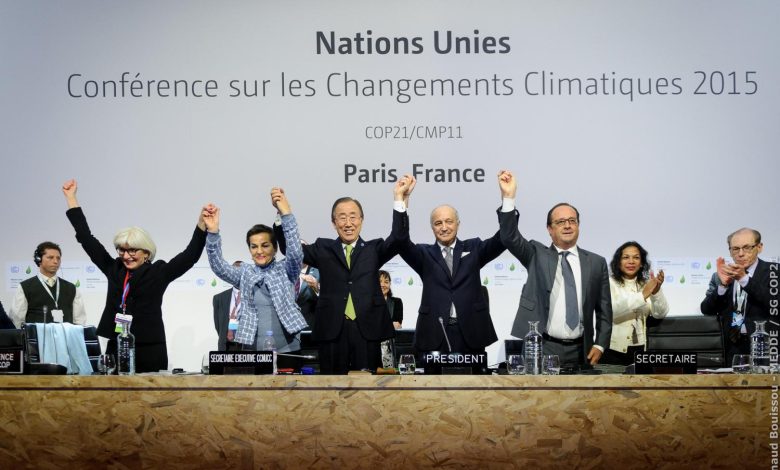Four Times More Green Finance Is Needed For India To Meet Its Paris Agreement Goals: CPI Study
This is even when India is emerging as a big player in the green bonds market after the US and China

Green finance is central to the overall discussion on sustainability of economic growth and It’s time for the developed countries to make their commitments of Green fund a reality and accelerate their availability for helping India to reach its climate targets. The cumulative cost of India’s current nationally determined contributions (NDC’s) is roughly 3.5 trillion dollars. But green finance continues to remain scarce in India and low in scale, even though India is emerging as a big player in the green bonds market after the US and China.
India needs four times more Green Finance than what is available to meet its Paris Agreement according to Climate Policy Initiation (CPI India). CPI has recently released an update of India’s first-ever effort to track green investment flows which are needed by the country’s current need for its ambitious climate targets.
In September 2019, India announced its target to reach 450 GW of renewable energy generation by 2030, making it one of the most ambitious targets in the world. The country will require ~INR 162.5 thousand crores (USD 2.5 trillion) from 2015 to 2030, a requirement of roughly INR 11 thousand crores (USD 170 billion) per year to finance its renewable energy goals and other climate actions. Yet we are currently far short of that finance goal, despite the tremendous opportunities abundant throughout India.
In 2021, India put forth enhanced ambitions on climate action and announced the Panchamrit targets, which include adding 500 GW of non-fossil fuel-based energy capacity and meeting 50% of its energy requirements through non-renewable sources. Such enhanced ambition requires mobilization of green finance at a much faster pace.
While the scenario for green investments does not look promising, in the two years since CPI’s initial report, finance flows increased by 150% from 2017-2018 to 2019-2020. In the overall increase, public sector flows increased by 179% and private sector flows by 130%. This shows increased commitment from public sources – both domestic and international.
According to the new report, titled ‘Landscape of Green Finance in India’, the tracked green finance in 2019-2020 was INR 309 thousand crores (~USD 44 billion) per annum, which is less than a fourth of India’s needs. The report estimates that for India to achieve its Nationally Determined Contributions (NDCs) under the Paris Agreement, the country requires an approximate INR 162.5 lakh crores (USD 2.5 trillion) from 2015 to 2030 or roughly INR 11 lakh crores (USD 170 billion) per year.
The Landscape of Green Finance in India evaluates finance flows to key real economy sectors— Clean energy, clean transport, and Energy efficiency. The study tracks both public and private sources of capital– domestic as well as international— and builds a framework to track the flow of finance right from the source to the end beneficiaries through different instruments.
This year, the Landscape also provides a first-of-its kind evaluation of Adaptation financing for select sectors.
The evaluation of finance flows has been estimated for key real economy sectors like clean energy, clean transport and energy efficiency. The study tracks both public and private sources of capital – domestic as well as international— and builds a framework to track the flow of finance right from the source to the end beneficiaries through different instruments with an emphasis on bottom up approaches based on actual flows rather than commitments, providing the most accurate analysis to date of where India’s climate finance stands, the finance gaps it faces, and the opportunities that lie ahead. This year, the report also provides a first-of-its kind evaluation of Adaptation financing for select sectors.
However, domestic sources continue to account for the majority of green finance, with 87% and 83% in FY2019 and FY2020, respectively. Of these domestic sources, the private sector contributed about 59%–INR 156.9 thousand crores (USD 22 billion), while public sector flows were evenly distributed between Government Budgetary spends (Central and State) and PSUs at approximately 54% and 46% respectively. The share of international sources increased from 13% in FY 2019 to 17% in FY 2020, but it is still a far cry from Prime Modi’s demand of a trillion dollars of climate finance at Glasgow last year, to help meet India’s 2030 and net-zero goals.
India needs approximately INR 162.5 lakh crores (USD 2.5 trillion) till 2030 for NDCs and INR 716 lakh crores (USD 10.1 trillion) to achieve Net-Zero emissions by 2070. By conservative estimates, the current tracked green finance in India represents less than 25% of the total requirement across sectors just to meet the NDCs. This accounts for mitigation only. Adaptation flows are even more muted.
India is one of the most vulnerable countries to climate change, and there is a pressing need for funds to flow into the Adaptation sector. Tracked finance for the sector stood at INR 37 thousand crores (USD 5 billion) in FY 2020, which was severely short of the required needs. The major source of Adaptation funding was domestic (94%), and it was fully funded by Central and State government Budgets. Collaboration and planning is key to increasing finance flows to the sector, as is the development of Adaptation investment plans at State level.
The writer of this article is Dr. Seema Javed, a known Environmentalist, Journalist and Communications Expert




